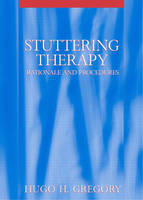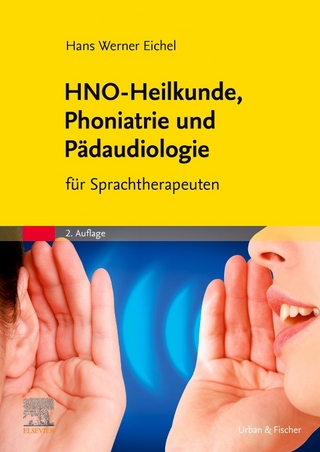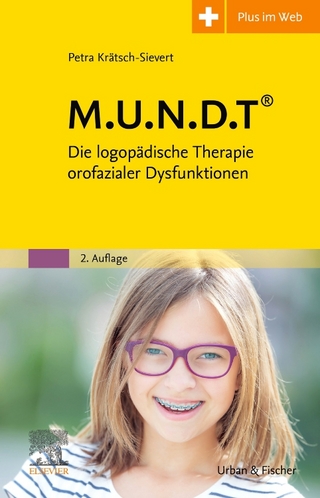
Stuttering Therapy
Pearson (Verlag)
978-0-205-34415-4 (ISBN)
- Titel ist leider vergriffen;
keine Neuauflage - Artikel merken
Stuttering Therapy: Rationale and Procedures provides students and professionals explicit descriptions of therapy procedures and their necessary rationale based on research and clinical experience.
This comprehensive text begins with basic background information about speech fluency and the nature of stuttering. It is unique among texts on stuttering therapy in that it includes a chapter providing analyses of eight areas of research, followed immediately by the implications of these findings for evaluation and treatment. Five chapters on assessment and treatment of all age groups carry out a main theme of relating research knowledge to clinical procedures. A final chapter focuses on a reframing of the processes of counseling and stuttering therapy.
Drawing on the authors' broad experience working together over a thirty-year period, evaluation is described with reference to the factors contributing to or maintaining a problem, resulting in individual subject profiles. Three separate chapters cover early intervention during preschool years, treatment of school-age children, and therapy for teenagers and adults.
This text features the extensive description of practical procedures, utilizing examples and case studies. The strengthening of self-concept and raising the level of self-esteem are viewed as the cornerstone of all behavioral, cognitive, and affective change.
1. Essential Background Information.
Speech Fluency.
The Problem of Definition.
Conclusion—A Working Definition of Stuttering.
The Measurement Issues.
Prevalence and Incidence.
Male-Female Ration.
Genetic Factors.
Environmental Factors.
The Development of Stuttering.
Spontaneous Recovery.
The Cause of Stuttering.
2. Implications of Research for Evaluation and Treatment.
Disfluency in Childrens Speech.
Family History of Stuttering.
Auditory System and Stuttering.
Speech Motor Processes in Stutterers.
Language, Disfluency and Stuttering.
Psychological Factors.
Physiology of Stuttering and the Fluent Utterances of Stutterers.
Brain Functioning.
Differential Evaluation—Differential Therapy.
Conditions that Ameliorate Stuttering.
Transfer and Maintenance (Follow Up).
Conclusion.
3. Basic Principles Providing a Rationale for Stuttering Therapy.
Differential Evaluation—Differential Treatment.
Relationship Between Client and Clinician.
Counterconditioning, Deconditioning and Desensitization.
Modeling.
Guided Practice.
Positive Reinforcement.
Self-Monitoring, Self-Reinforcement.
Generalization.
Transfer of Behavior Change.
Follow-Through and Maintenance.
Integrating Cognitive, Affective and Behavioral Aspects of Therapy.
4. Differential Evaluation of Stuttering Problems.
Background.
Introduction.
Case History.
More Formal Observations and Testing.
Prepare a Diagnostic Statement and Develop a Differential Treatment Plan.
Evaluation of Acquired Stuttering in Adulthood.
Summary and Cross-Reference with Research in Chapter 2.
5. Differential Treatment of Stuttering in the Early Stages of Development.
Background and Introduction.
The Roles of the Speech-Language Pathologist in the Prevention and Treatment of Stuttering.
Selection of a Differential Treatment Strategy.
Some Final Thoughts About Parent Counseling.
Treatment Results.
Summary and Cross-Reference with Research Analysis in Chapter 2.
6. Therapy for Teenagers and Adults Who Stutter.
Background Information.
Four Areas of Activity.
Objectives of Therapy with Reference to Speech Change and Attitude Change; Stutter-More-Fluently, Speak-More-Fluently and Combination Approaches.
Supplementary Procedures.
The Hierarchy (Transfer).
Problem Solving.
Follow Up.
Group Therapy.
Stuttering in Adolescence: Special Considerations.
Results of Treatment.
Summary and Cross Reference with Research Analysis in Chapter 2.
7. Therapy for Elementary School-Age Children Who Stutter.
Background Information.
Overview: Integrated Therapy Program.
Relationship Between the Child, Parents, Teachers and the Clinician.
Modifying Speech.
Helping Children, Parents and Teachers Understand Therapy Goals, Procedures and Rationale.
Exploring and Modifying Attitudes.
Modification of Home and School Environments.
Managing Accompanying Speech, Language and Educational Problems.
Treatment Logs: A Method of Planning and Documenting the Therapy Process.
The Process of Dismissal and Follow-Up.
Treatment Results.
Summary and Cross-Reference with Research Analysis in Chapter 2.
8. Counseling and Stuttering Therapy.
Background Information and Introduction.
Understanding the Origins of Personality with Special Reference to the Psychology of the Self.
The Counseling Relationship and Becoming a Better Trained Listener.
Clinicians' Understanding of Transference and Counter-Transference.
Timing the Giving of Information and Utilizing Cognitive Therapy Approaches.
Desensitizing Emotional Responses.
Specific Issues Related to Counseling Children and Parents.
Using a Self Psychology Model to Integrate Affective, Cognitive, and Behavioral Factors in the Therapy Process.
The Speech-Language Pathologist/Counselors Limitations.
Improving Counseling Skills.
Summary on Counseling and Cross-Reference with Research Analysis in Chapter 2.
References.
| Erscheint lt. Verlag | 31.10.2002 |
|---|---|
| Sprache | englisch |
| Maße | 182 x 244 mm |
| Gewicht | 699 g |
| Themenwelt | Medizin / Pharmazie ► Gesundheitsfachberufe ► Logopädie |
| Medizin / Pharmazie ► Medizinische Fachgebiete ► HNO-Heilkunde | |
| ISBN-10 | 0-205-34415-1 / 0205344151 |
| ISBN-13 | 978-0-205-34415-4 / 9780205344154 |
| Zustand | Neuware |
| Haben Sie eine Frage zum Produkt? |
aus dem Bereich


